Riding Disciplines
Welcome to Riding Disciplines which covers every English and Western riding style! The English riding covers Dressage, a ballet on horseback, Driving which features both the beautiful horses and the carriages they pull, Foxhunting, Eventing, Jumping, Saddle Seat, and even the sport of Polo.
The Western riding category includes Pleasure, Reining and all Rodeo events involving a horse, so look for Barrel Racing, Bronc Riding, Chuck Wagon Racing, Cutting, Pole Bending and Roping.
Want to know the date of your favorite horse show or rodeo? Don’t miss it! Dates and locations are included in the in both the Calendar of Events for English Riding and the Calendar of Events for Western Riding. Are we missing a category or event? Please use the useful feedback link and let us know!
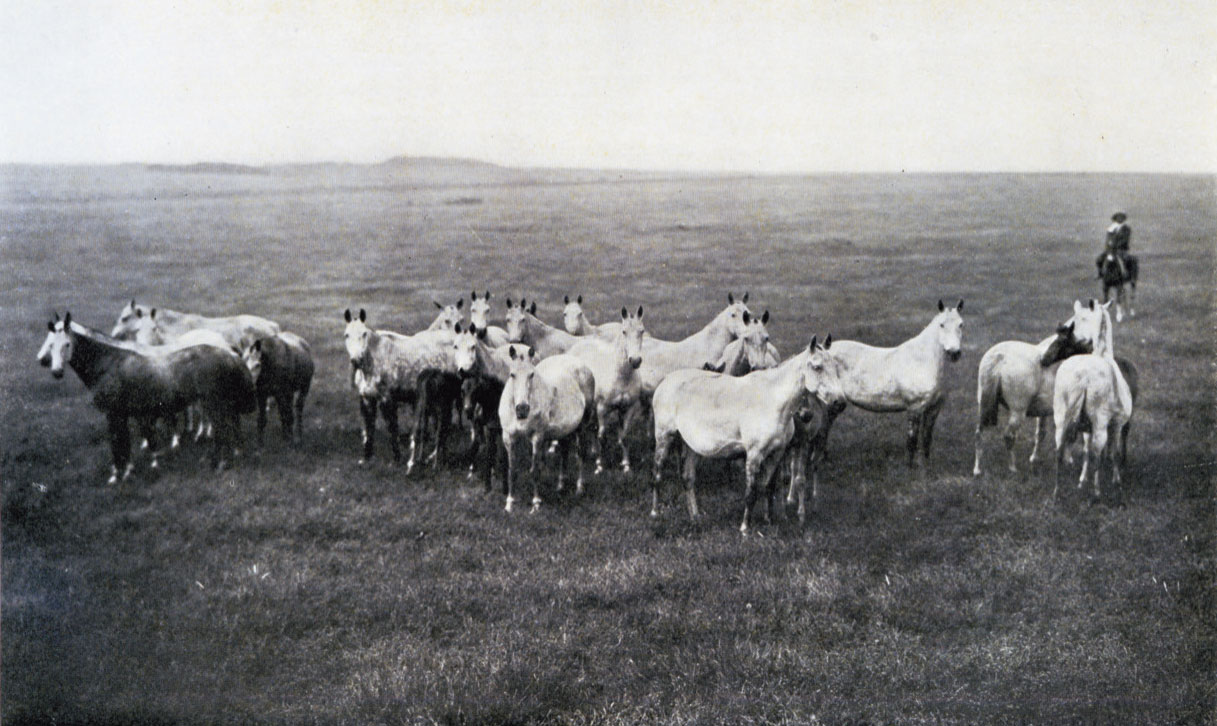
In the early 1920s, one of the most important polo pony breeding operations in Argentina was Estación Chapadmalal. Established by Miguel Martinez de Hoz, his philosophy was to use small Thoroughbreds in the production of polo ponies. The farm included 110 broodmares, 22 of which were selected because of their bloodline’s smaller size.
“From these, I am trying to breed my future polo pony sires. A difficult job, I tell you; but with time and patience I hope to succeed,” wrote Martinez de Hoz, in a May 1922 article in “The Polo Monthly.” “Big horses have been bred from the Arab, so why should we not breed small ones? After all, the big 16.2-17 hands Thoroughbred was bred from an Arab, who is a pony!”
The Martínez de Hoz family were Spanish merchants, arriving in Argentina’s Río del Plata in the late 18th century. José Alfredo Martínez de Hoz had no children of his own so he sent for his nephew Narciso Alonso de Armiño to help with his business. Grateful for the opportunity, Narciso adopted his uncle’s last name. Narciso began purchasing farm land in the area. Later, his son José Toribio Martinez de Hoz followed suit, amassing so much land, they were one of the country’s most prominent landowning families.
Their estancia, Chapadmalal was located about 255 miles south of Buenos Aires, and just 15 miles away from the resort town of Mar del Plata. It encompassed over 63,000 acres.

José Toribio Martinez de Hoz co-founded the Rural Society to represent Argentine landowners, serving as its president until 1870. It is the same Rural Society that today holds annual livestock shows, which many of the polo players participate in with their prized polo prospects.
When José Toribio Martinez de Hoz died prematurely, his widow moved with their two sons, Miguel Alfredo and Eduardo Antonio Justo, to England.
After completing school there, Miguel Martinez de Hoz returned to Argentina. Without anyone looking after the land, sections of it were in poor shape when he arrived. He sold off some land and added other parcels. He built fencing and barns and purchased horses, cattle and sheep to breed. Influenced by his time in Europe, he hired an English architect to design a Scottish castle for his family, accompanied by beautiful landscaping, mirroring the finest English gardens.
As motor cars became more widely used, and the need for draft horses dwindled, Martinez de Hoz focused instead on breeding Thoroughbreds.
He continued to travel to England, and often competed there with some of his prized carriage horses. Gay Boy, a champion harness horse, was bred at Chapadmalal. For some time, Martinez de Hoz ran the London-Guildford coach with horses bred at his breeding farm in Argentina.
He also played polo in England and France, and served on the Editing Committee of The Polo and Riding Pony Society in London.
A report in the June 1918 “The Polo Monthly” noted that King Alfonso of Spain had recently purchased four Argentine polo ponies from Miguel Martinez de Hoz.
“We may be sure that any ponies of Mr. de Hoz’s breeding will be bred on good lines, for he does not go in for poor pedigrees. In fact, he has some of the finest examples of many breeds of stock at his stud farm, and the production of polo ponies is an interesting side line which he has recently taken up,” the report said.
“Mr. de Hoz, who before the war often drove his coach to Ranelagh and Hurlingham, will be remembered as the purchaser of Craganour for 30,000 guineas immediately after that horse’s sensational disqualification from the Derby. The purchase has proved a great financial success.
“Mr. de Hoz has recently bought Botafogo, the best racehorse of his time in the Argentine, the price being £40,000 down and the right on the part of the vendors to send two mares to the horse each season free of charge for five years. This establishes a new record price for Thoroughbred horses.”
Read more: Las Pampas Ponies - Argentine stud farm bred smaller polo Thoroughbreds
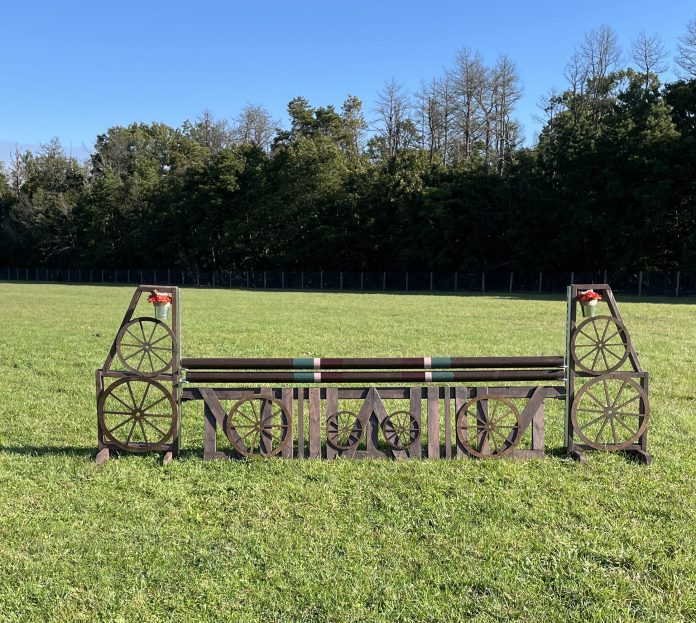
by Liz Houley-Glassman
In January 2023 our small barn of adult ammies unexpectedly found ourselves scrambling to find a new home for our 13 horses. We landed in a great little barn with great bones, but it had not been occupied in several years. After the epic move, we all caught our collective breath to assess and learned that there were very few existing jumps.
Since I am widely considered the “Ms. Fix It” at the barn, I took on the job of building jumps. It was and remains a true labor of love and a constant source of inspiration. My phone is filled with screenshots of ideas for jumps.
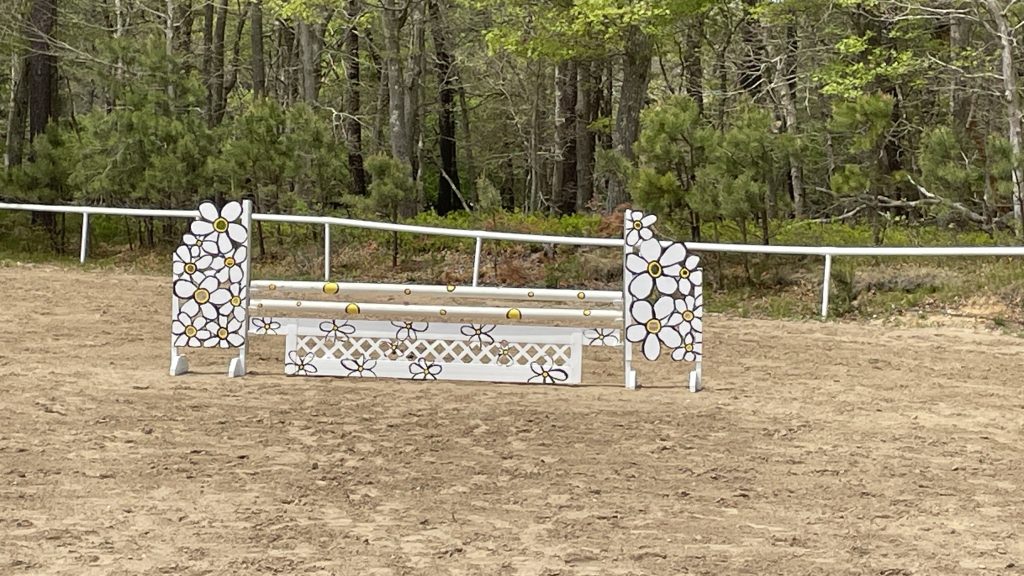
I started building truly basic jumps and have expanded since. I have a few rules and fun tips.
- Use pressure treated lumber for every project
- Sand/Stain or paint to keep in good condition. Use decent quality exterior paint and always check the “oops” section of Lowes for mistake outdoor paints and stains
- Store all of your projects off the ground when not in regular use
- Buy a mix of high and low end (Michael’s on sale and Dollar Tree) fake flowers in the same color scheme to decorate
- Look for wooden pallets getting tossed out. They are your best friend and make a great construction base
- Make sure that you keep all of the jumps secure and safe (no exposed nails or screws)
- Cut, sand, or round off any sharp corners on jump bases so you get less mashed if you fall into it
- Measure twice and cut once
- Always predrill into your wood with a smaller drill bit than the screw you are using. Screwing into raw wood can split it
- Make the most of found items. I would love to only use 10’ round wooden poles but they are very costly and almost impossible to source where I live so I used many old 10’ PVC pipes that were lying around. I sand them and paint them Landscaping timbers are a great option to use as poles too. They are only 8’ long but the bright side is that they force you to ride “straight”. They fit well in our smaller ring and are pretty darn solid so if your horse gets wise to the lightweight PVC poles add these poles into the mix
- Always add a small base or feet to the jump fillers so they blow over less
- A great “cheat” shortcut is to buy the easy up jump “pin-less” jump track and pins. The best price I have found by far is on Schnieders website. The track also enabled me to use 2” x 4” wood vs the 4” x 4” for standard bases Name your jumps with barn mates help. When I had some left over half round pieces from the stone wall I thought they would make cute fillers. We collectively decided between “fruit slice and planets”. Fruit slices won out. Some of our other creative jump names are “Lilly” (as in Pulitzer), Daisy, Red Door, Piano, Green Fuzzy and the self-evident “roll top, stone and wagon wheel”
- I personalize and add a stamp of our “Artemis” barn logo on every piece I make
- Each jump starts with a sketch and a general plan of attack
How to tips on some of the specific jumps
Plain skinny standard
The build description below sounds so much more complicated than it is but here goes.
I bought 2 – 4”x 4” x 10’ and cut them into two 5’ tall pieces. I created a “pinwheel” pattern for the base fanning it around the 4”x 4” standards with 4 – 16” sections of a 2” x 6”. I suggest using 9” long carriage bolts/nut to really secure the base long term.
While building you can “tack it” together with screws to hold it while drilling through the all the base layers for the permanent connectors, I suggest an electric drill for this part of the job because it’s work getting though 8 inches of pressure treated lumber to reinforce with the carriage bolts.
Drill 2 holes on opposite sides of the base to create a total of 4 holes. Space the 4 drilled bolt holes (2 on each side) to that they cross but don’t cut into each other’s bolt path. Cut the excess bolt length and tighten to secure with a ratchet.
I drilled jump cup holes every 3” starting about 18” high about the base. Make sure these are straight and test with an actual jump cup with pin to make sure they work.
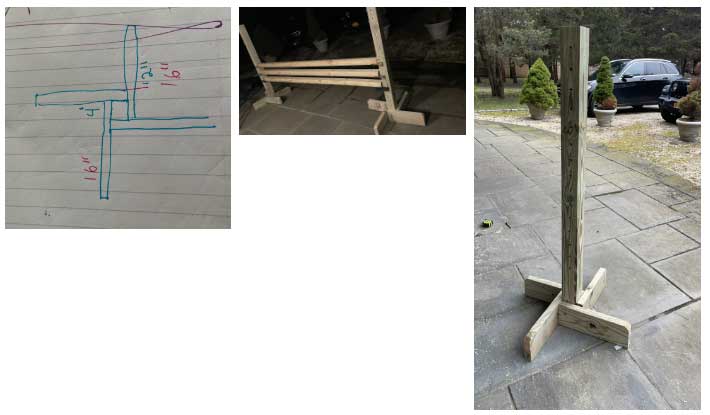
Basic Pallet Jump/Filler
The “Green Fuzzy” jump is made of 2 back-to-back (double wide” pallets with cheapo amazon “boxwood panels” wrapped around it. I cut the pallets down to the height of the jump. There is a logical cutting pattern to each pallet. I think they are 2’3”). I tossed or reused the parts of the palettes I cut off.
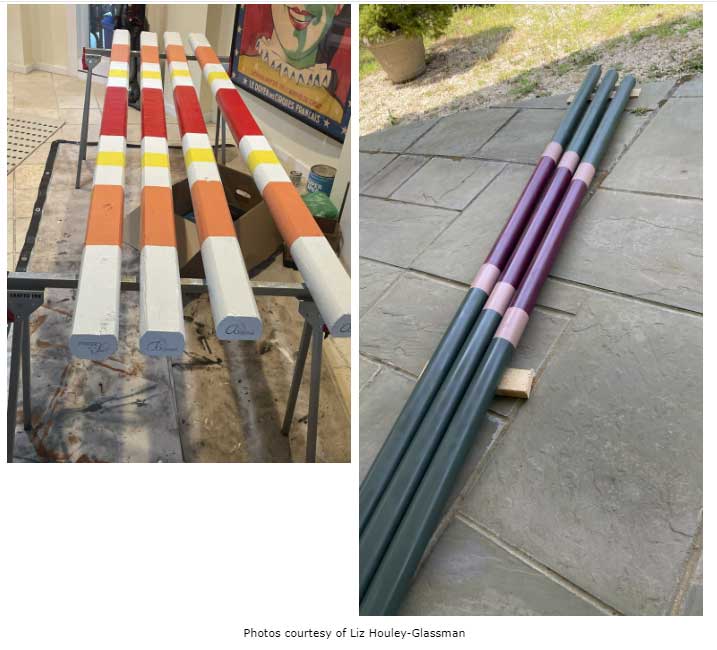
The fuzzy poles are made of 8’ landscape timbers wrapped with cut sections of a cheapo 5’ x 8’ astroturf rug. The Astroturf is carefully secured with 1” long lathe screws.
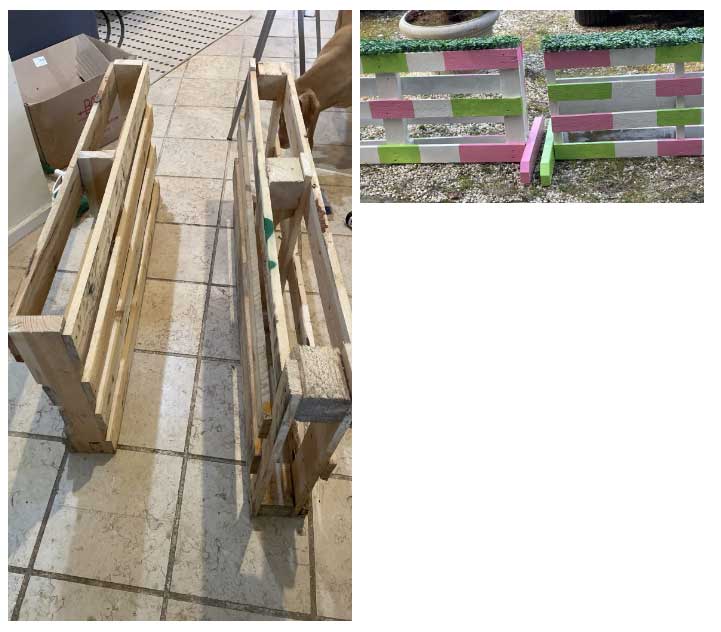
The Piano jump combines two pallets lengthwise and extra pallet wood was added in a random pattern and painted black and white.
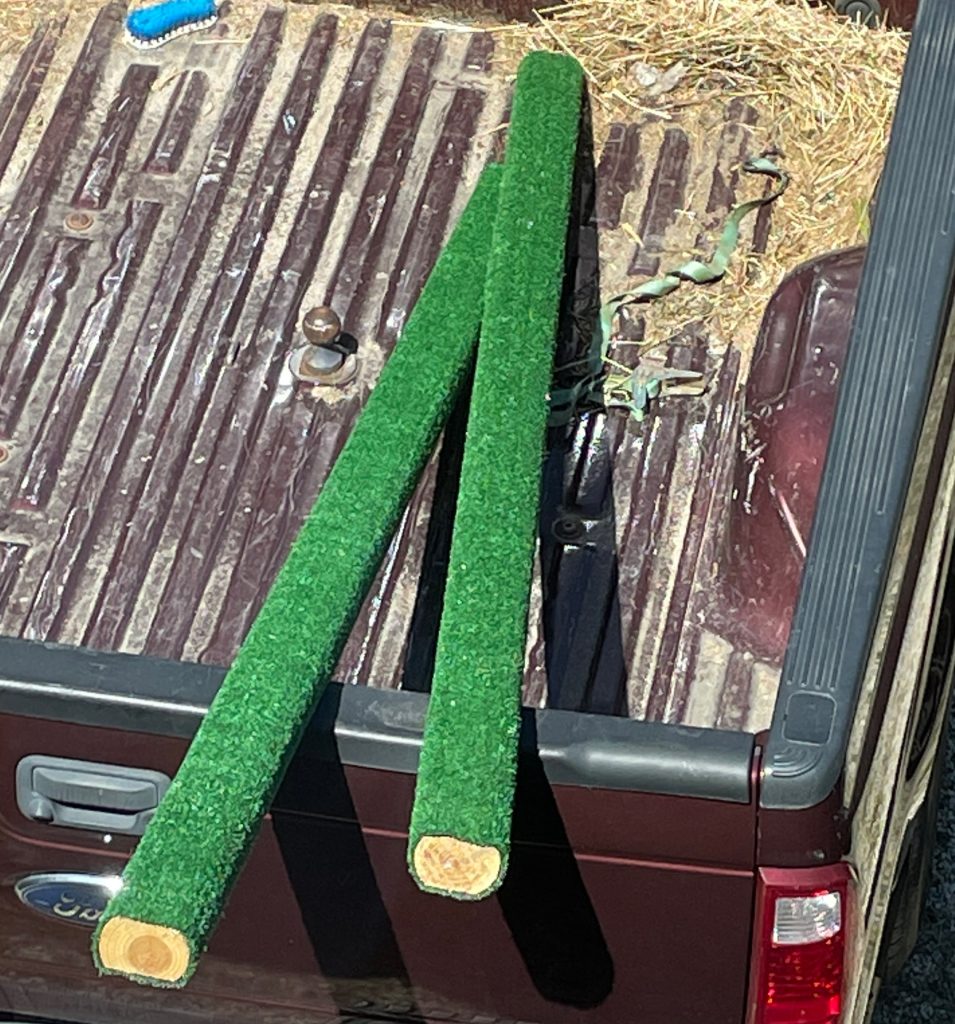
Rainbow uses two palettes for the base and new solid 1” x 3” sections. Primed and painted. We added glitter to the paint to the top of the jump because our trainer’s young daughter wanted us to.
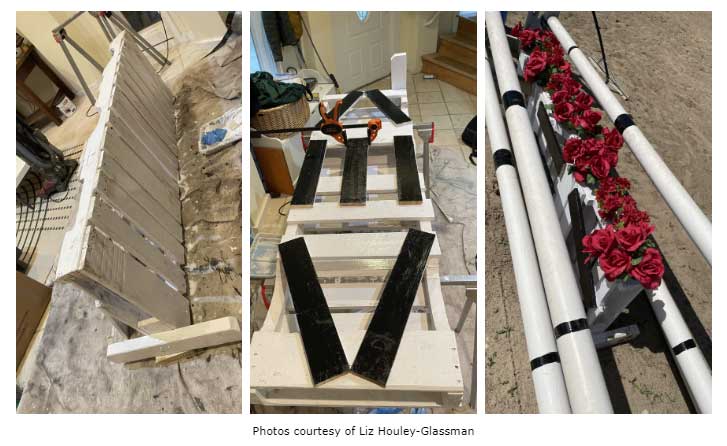
Every pallet jump has evenly drilled holes at the top so we can easily insert our flowers.

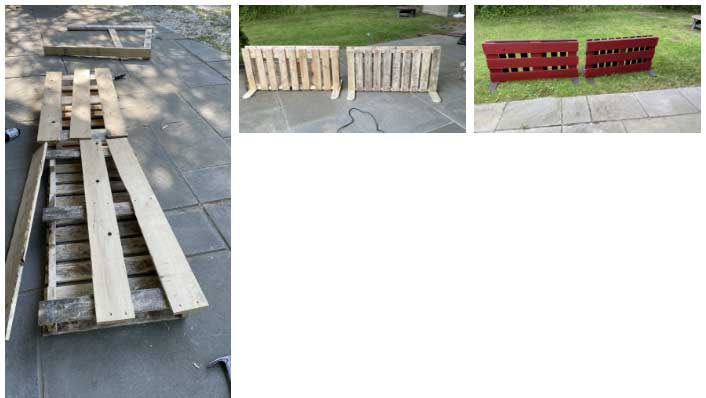
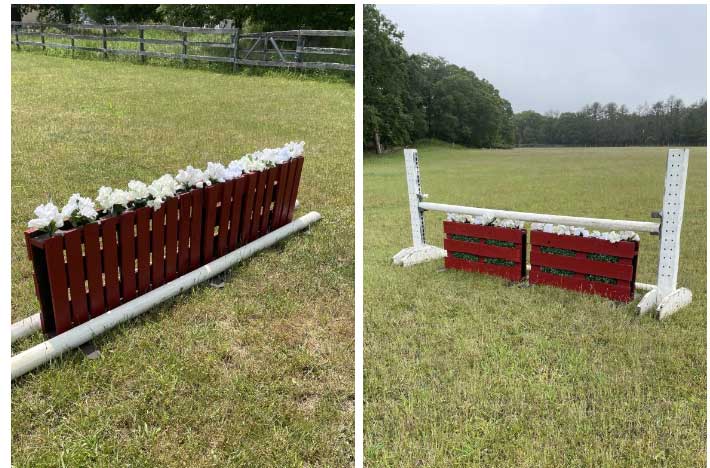
With a history dating back more than 200 years, it is fair to say that horse racing has established itself as one of the most popular sports in Australia.
The country stages some of the most famous events in the world including the Melbourne Cup – widely known as ‘the race that stops the nation’.
Given Australia’s passion for horse racing, it naturally follows that it is home to some of the finest jockeys on the planet. Read on as we look at four of the best.
James McDonald
Horse racing and betting are intrinsically linked – a factor which makes it imperative for every punter to understand which jockeys are worth following.
For anyone just learning how to bet on horses in Australian racing, a good start point is to wager on any fancied runners ridden by James McDonald.
The New Zealand born jockey is rated by many respected pundits as the best rider in the world and it is difficult to argue with that viewpoint.
McDonald has had Group 1 successes in several major racing jurisdictions including Australia, Hong Kong and the United Kingdom.
The Kiwi star famously won the Melbourne Cup aboard Verry Elleegant in 2021 and has become closely associated with winning machine Romantic Warrior in recent times.
Mark Zahra
Mark Zahra has developed into one of the most sought-after jockeys in Australia over the past few years, particularly whenever Group 1 races are staged.
He went under the radar a little during the early part of his career, but sprang to prominence when winning the Turnbull Stakes and Caulfield Cup aboard Verry Elleegant in 2020.
However, the Aussie jockey took things up a notch a couple of years later when steering Gold Trip to victory in the 2022 Melbourne Cup.
Zahra demonstrated his ability to make big calls when he rejected the ride on Gold Trip in favour of piloting Without A Fight in the 2023 edition of the race.
That decision was vindicated when Zahra guide Without A Fight to an easy victory. Gold Trip was unable to repeat his heroics from the previous year as he finished 17th.
Damian Lane
With numerous Group 1 successes on his CV, Damian Lane is undoubtedly one of the best jockeys produced by Australia in recent years.
The 29-year-old has won numerous top-class races in Australia, Japan and Hong Kong to highlight why many respected judges rate him as the man for the big occasion.
Lane famously won the Japanese Derby aboard Tastiera in 2023, making him the first jockey from the southern hemisphere to win one of the classics in Japan.
There have been rumours that he will eventually join the ranks in Japan permanently, although Australian racing will be eager to retain his services.
Although Lane is yet to win the Melbourne Cup, it would be a major surprise if he failed to achieve the feat at least once in his career.
Craig Williams
Having ridden more than 2,000 winners during his illustrious career, Craig Williams can rightly lay claim to being one of the finest jockeys Australia has ever produced.
Williams notably had a stint with trainer Mick Channon in the United Kingdom earlier in his career – a spell that including winning the 2000 Dewhurst Stakes aboard Tobougg.
He came close to recording an historic treble in 2011. After winning the Caufield Cup and Cox Plate, Williams was scheduled to ride Dunaden in the Melbourne Cup.
However, he picked up a suspension in the run-up to the race and had to watch from the sidelines as replacement Christophe Lemaire steered the horse to a memorable victory.
The Australian jockey rode 18 Group race winners last season to demonstrate why he is ranked so highly by his peers.
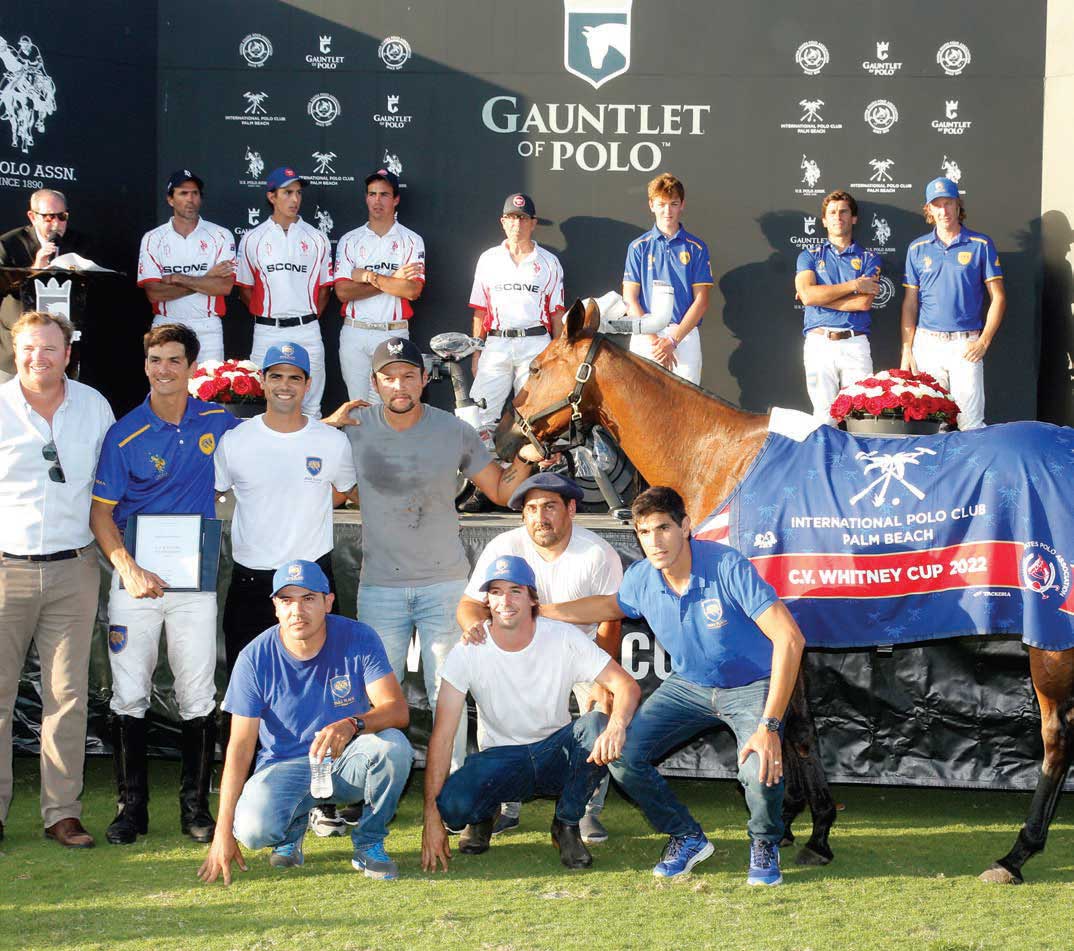
BEST OF THE BUNCH Some of the most talented equine athletes on the field.
The most talented polo athletes are making last-minute preparations for this year’s Gauntlet of Polo series. Starting this month and being played until April 23, the series includes the C.V. Whitney Cup, the USPA Gold Cup and the U.S. Open Polo Championship.
As the most prestigious polo tournaments in the U.S., the players are pulling out all the stops to fortify their polo strings, gathering some of their most valuable horses to give them the best chance to take the titles.
With each team bringing a minimum of 40 horses, over 500 horses are expected to compete in the Gauntlet this year, and only the best will do.
This season promises to be as exciting as ever, with some of the top players counting on their favorite horses to get them to the trophy stand. Some of these horses have played in the Gauntlet before, while others are making their debut.
Some players keep their horses in the U.S., while others will keep their best horses with them, flying them to whatever country they are playing in, or they may keep them in one country to get more polo miles and bring them to the U.S. when they have matured.
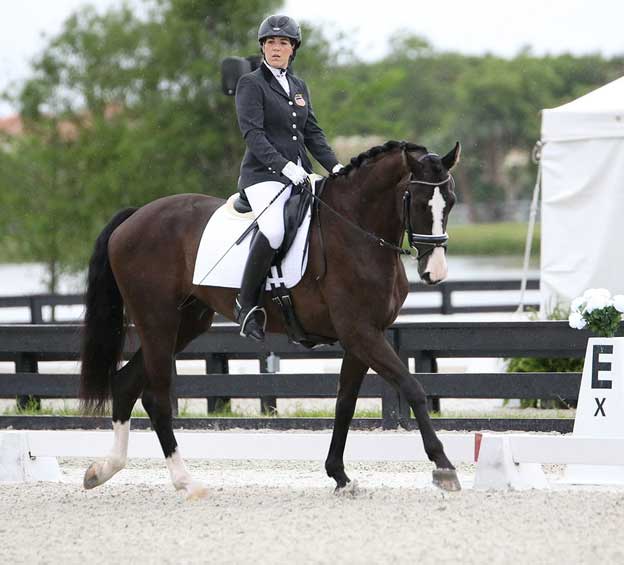
By: Sophia Wilbourn
Don’t go anywhere! The Tokyo Olympics might be over, but the Paralympics are just getting started, and Team USA is shining brightly.
After the first day of Para Dressage competition, the world’s number one ranked Para Dressage athlete, Roxanne Trunnell of Richland, Washington, won the grade I dressage individual test event at the Paralympic Games Tokyo 2020. She is the first American rider to win a Paralympic medal in Para Dressage since 2004 and also the first to win gold since Vicki Sweigart did so in 1996. Trunnell is the third woman to ever win a dressage gold medal for Team USA at either the Olympic or Paralympic Games.
This is not Trunnell’s first Paralympic Games. She first competed in 2016, and has only become more skilled since then. This time around, she and her 9-year-old partner Dolton scored an 81.464 percent at Tokyo’s Equestrian Park, dashing the dreams of number two in the world, Latvia’s Rihards Snikus, who scored an 80.179 percent.
To keep her head in the game, Trunnell said she didn't look at the other scores before riding so that she could just go out and do her best.
- StreamHorseTV’s Tokyo Takeaways, Presented by Haygain
- Olympians Music is Elevating Entertainment Value in Dressage
- Tokyo Olympics: Dutton’s Diaries
- Olympia London International Horse Show
- Paperless Scoring Has Arrived
- Horse Trainer Carly Ramsey Finds Success in Wildly Different Equestrian Disciplines
- Escondido Girl, 12, a World Champion Equestrian
- "You just keep going" 11-Year-Old Becomes Cutting Horse World Title Holder
- My Horse Accepts Me, So the Rest of the World Can, Too
- Gonza Pieres talks horses: “I am intrigued by each player’s best horses”
- 10 Tips for Returning to Horseback Riding
- A History of the Florida Cracker Cowboys
- Prescott Frontier Days 2019: World’s Oldest Rodeo
- Can We Ride for the Fun of It? - Excerpt from "Dressage for No Country"
- Archaic Middle Eastern Variations of Polo
- Top 7 Ways To Spot An Effective Rider
- The Basics of Competitive Trail Riding
- Equestrian Vaulting is Finding a Foothold Among Children
- The Making of a Barrel Race Champion
- Three Ways the Judge Can Be Your Ally































